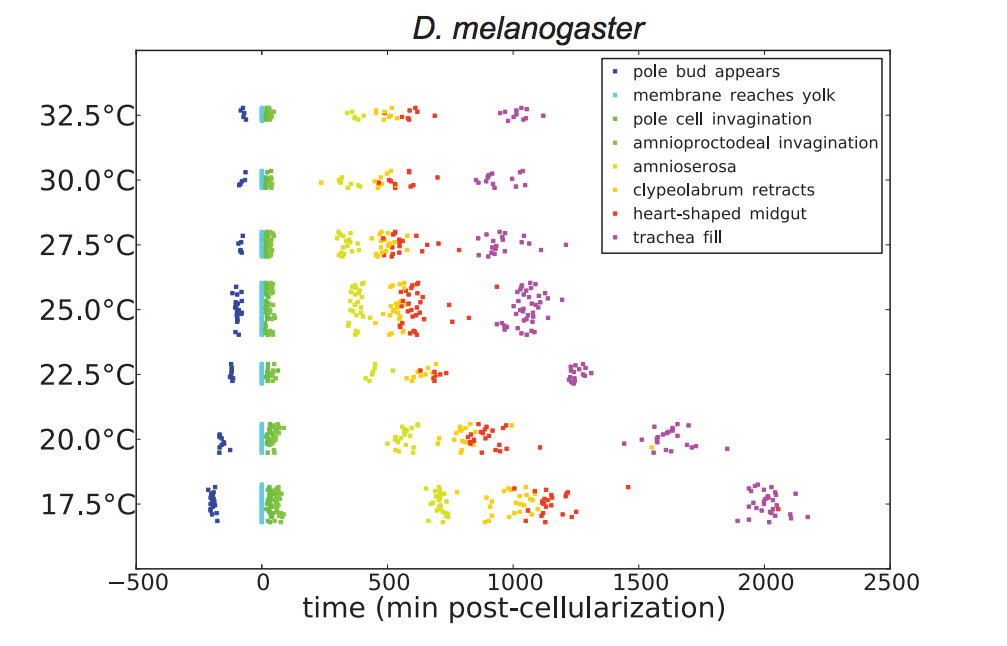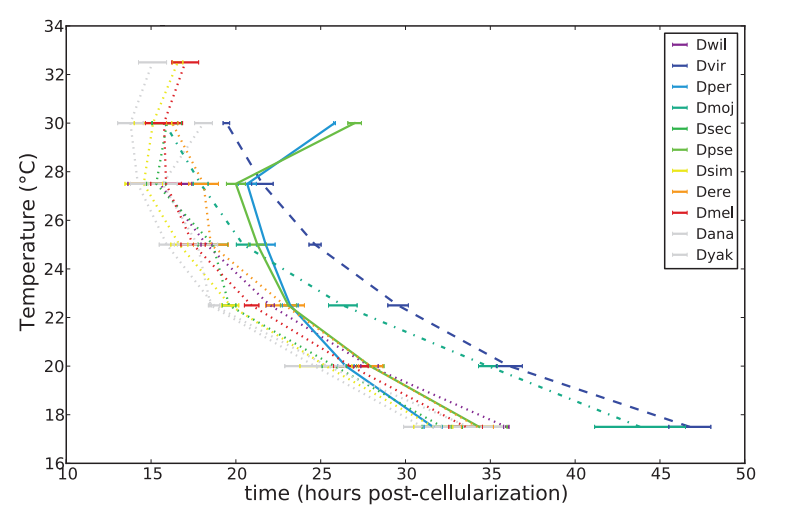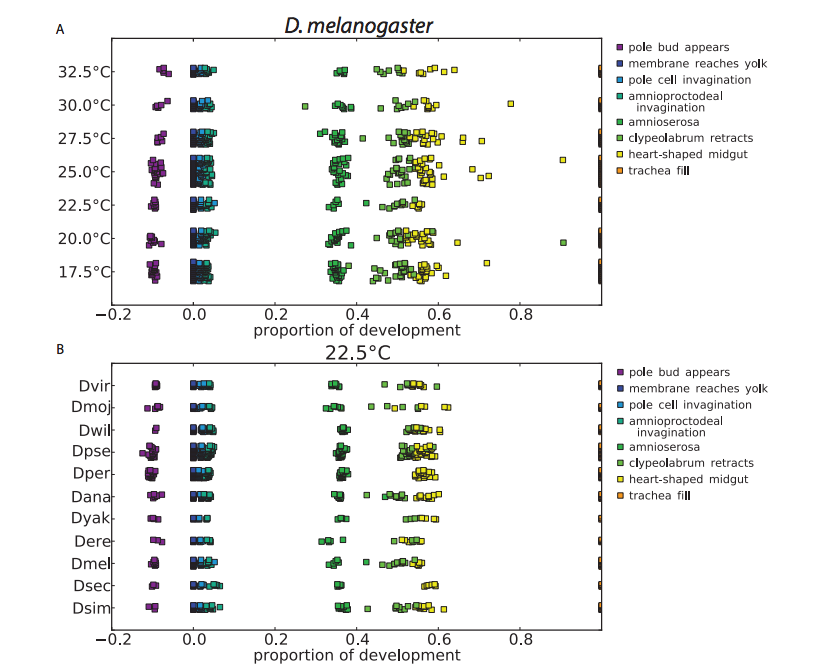We posted a new preprint from the lab on arXiv and would love your comments.
This work was born of our efforts to look at evolution of transcription factor binding in early embryos across Drosophila. When we started doing experiments comparing the three most commonly studied species, the model D. melanogaster, D.pseudoobscura and D. virilis, we quickly ran in to issue: even though these species look superficially fairly similar, and develop in roughly the same way, they don’t really like to live at the same temperature, and even when they are grown in common conditions, they develop at different rates.
So, for example, in order to collect an identical sample of stages from D. melanogater and the slower-developing D. virilis, you have to collect for different amounts of time- and we had no real idea of how this would affect the measurements we are making. And if you want to compare the tropical D. melanogaster to the cold-preferring D. pseudoobscura, you can either choose to collect at temperatures that neither prefers (21C) or grow them under different conditions, again with no clear understanding of how these differences affect our measurements.
So, a few years ago, a new postdoc in the lab (Steven Kuntz) decided to look at this question in more detail. He first developed methods to take time-lapse movies of developing embryos at carefully controlled temperatures, and then proceeded to characterize the development of 11 Drosophila species (all with fully-sequenced genomes) from different climates at eight temperatures ranging from 17.5C to 35C. He then developed a combination of manual and automated ways to identify 34 key developmental landmarks in each movie.
As was already well known, D. melanogaster development accelerates at higher temperatures taking around 2,000 minutes at 17.5C but just over 1,000 minutes at 32.5C.
We observed similar overall trends for other species, with the other tropical species (D. simulans, D. sechellia, D. erecta, D. yakuba, D. ananassae and D. willistoni) showing similar patterns to D. melanogaster, while the temperature (D. virilis and D. mojavensis) and alpine (D. pseudoobscura and D. persimilis) were consistently slower even when grown at identical temperatures. The tropical species all started to show effects of high temperature (lower viability and slower development) at 32.5C, while the alpine species showed even greater effects at the cooler 30C.
There’s a lot more in the paper about both of these issues, but the thing that I find really amazing, is that despite all of this variation in developmental timing both between species and at different temperatures, the relative timing of the 34 events we measured was virtually identical in all species and conditions. Indeed we find no statistically significant differences in the relative timing of any event between the initial cellularization of the blastoderm and hatching.
I find this almost perfect conservation of the relative timing of development across these diverse species and conditions stunning – and very much counter to what I expected – which was that different stages, which involve very different molecular and cellular processes, would be differentially affected by temperature, and that either selection or drift would have led to variation in relative timing between species. While there are lots of possibile explanations for this phenomena, the most straightforward is that developmental timing is controlled by some kind of master clock that scales with first-order kinetics with temperature, and which is the major target for interspecies differences in developmental timing. If true, this would be quite remarkable.
If you’ve gotten this far, you’re obviously reasonably interested in the topic. As I’ve written before, we are now posting all of our lab’s paper on arXiv prior to submitting them to a journal, and we invite you comments and criticism, with the hope that this kind of open peer review will not only make this paper better, but will serve as a model for the way we all should be communicating our work with our colleagues and interacting with them to discuss our work after it is published.
We’re going to try out PubPeer for comments on this paper. Please use this link to comment.
Originally appeared on MichaelEisen.org, June 24th, 2013







Comments